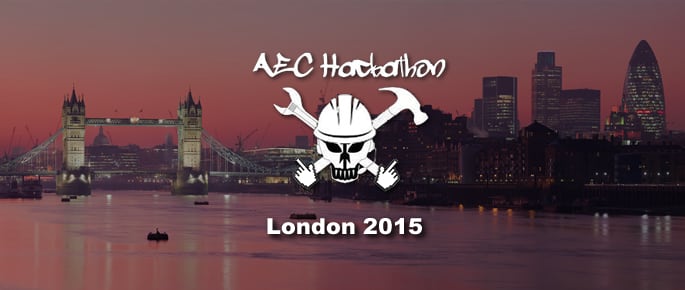San Francisco-based Damon Hernandez is chief executive of not-for-profit organisation AEC Hackathon, which has held seven “hacking” events in the US where built environment professions meet the digital industry to find tech solutions to construction problems. The first London event takes place 17-19 July.
Can you tell us a bit about yourself?
My background is in web and interactive 3D, I do a lot of work with the standards surrounding that. And also I work with a residential construction company that uses more efficient processes. I had a colleague who was a builder, and I told him I wanted to use video game technology and robots to build houses, and that led me into the AEC [architecture, engineering and construction] market.
We take a lot of the process and automate it, for instance we use a CNC timber cutting machine linked to a 3D CAD model so you speed up the process of fabrication, and I look at how we can use virtual reality to build apps for the builders, so they can go into the VR and work out their costs.
So what’s the story behind the first AEC Hackathon [in Silicon Valley, November 2013]?
The hackathon came into existence as I saw a couple of things happen. I met people from the built environment space that wanted to adopt new technologies but here in the US the R&D budget is pathetic, I think the industry as a whole spends less than the fishing industry! I saw folks that wanted to incorporate new technologies, but often their decision-makers were freaked out about technology. So I wanted to provide an environment for people to hook up with and meet technologists.
And I was also meeting technologists who wanted to sell 3D products to the built environment sector, so they’d get a VR technologist selling a system, but then it wouldn’t do what it promised it would do, and there was a danger the technology would become blackballed. So I thought, how do we bring together the most creative technologists and the whole built environment sector?
So you took the ‘hackathon’ idea and brought it into the built environment.
Yes. I went to my builder colleague and he said ‘do it’. More people came on board, and we decided to do the first one in November 2013. Being more on the nerdy side, I expected 10 people to show up, nine of which were my friends! But at the first event, there were 130 people, only a third were from California, the rest from across the US and even Europe.
How did the first event turn out?
I didn’t know what to expect, I thought people would be in two groups: people who didn’t understand tech but wanted a free app or R&D, and from the tech side I thought you’d get a bunch of difficult coders. In the event, the people who showed up were computer scientists, construction managers and architects or engineers, and you had real collaboration. Here in the US, every location brings in people from outside the area – it’s not just local people who don’t have anything on that weekend.
At the first event, people just did presentations about what they would have liked to build, but at the second event, many of the presentations were working apps.
So what sort of ideas have come out of the hackathon events?
We’ve had an amazing scope of hacks. A team from Mortenson and Microsoft Connect made an app called “Dude, where’s my nail gun”, using sensors and RFID technology to cut the cost of lost tools – apparently Mortenson had a $50,000 budget on projects for lost tools.
There was another app that allowed you to go inside a 3D model and look at the 4D schedule and make annotations. And a young man of 14 came with this father and built an autonomous robot with temperature sensors and cameras, it can drive around a room and collect data. And one team decided they were going to make Navisworks’ clash detection work better – it’s pushing the bar.
We set challenges to solve industry problems, it isn’t playing with the technology gratuitously – we wanted solutions that could be implemented on Monday.
And what’s happened to the ideas after the event?
Some people have taken their hack on as a feature or a product, and they have the opportunity to fill out the idea. Many get posted on Github or another online community for other people to comment on or contribute to. A team from Rogers O’Brien Construction and Balfour Beatty US did a hack about documentation, they hooked up a 360 degree camera [on site], geolocated and uploaded the data on a Google Maps interface, and you could click on the data or you could put on your Oculus Rift and be there. They took the money they were offered as prize money and used it to offer a prize to someone else who could develop the idea.
How is the AEC Hackathon run?
There’s a board of people representing different groups, like smart cities, or virtual reality. And it’s not-for-profit, the funds we raise are put towards the event, and any additional money that doesn’t go towards the prizes we donate to a military veterans’ organisation. Folks are coming because they want to move the industry forward, not because they’re getting a big cash prize.
What do you see as the future of hackathons?
If this continues, in four or five years, I hope there won’t be any hackathons, because all the firms will be innovating more. It also pushes the bar up for the solutions the software companies have to make.

AEC Hackathon comes to London on 17-19 July. For more information visit http://aechackathon.com/aec-hackathon-2-4-london/











